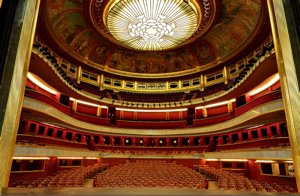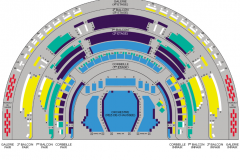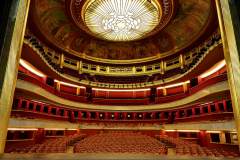Wiener Philharmoniker, Zubin Mehta, Pinchas Zukerman
January 2025 | ||||||
|---|---|---|---|---|---|---|
Mo | Tu | We | Th | Fr | Sa | Su |
Concerto No. 3 resembles a series of bright, witty and intense episodes connected by the same taut poetic line. The bow must dodge the many pitfalls, but no one is more fully aware than Pinchas Zukerman of the challenges presented by this uniquely bright piece. In a completely different vein, Bruckner wrote his Symphony No. 9 in the knowledge that it would be his last, and deliberately chose the tone of Beethoven’s Symphony No. 9 in D minor. Between and 1891 and late 1894, he wrote the first three movements, then wrestled with it for two years, but failed to complete it. The musician never heard it performed, but it has always exerted a powerful fascination over generations of conductors. It is undoubtedly the pinnacle of the musician’s achievement. Some fifteen years ago, Zubin Mehta conducted this symphony on one of his visits here with the Vienna Philharmonic in counterpoint with Haydn’s last symphony. This evening he has opted to bring a ray of Mozartian sunshine before the Brucknerian gloom.
Program and cast
Wiener Philharmoniker
Zubin Mehta | direction
Pinchas Zukerman | violin
Mozart Concerto for violin No. 3 K. 216
Bruckner Symphony No. 9
Théâtre des Champs-Élysées

The Théâtre des Champs- Elysées is undoubtedly one of the finest venues in Paris . Built in 1913 , it has the distinction of having been designed by a group of artists architects Henry Van de Velde and Auguste Perret , the painter and sculptor Antoine Bourdelle , the painter Maurice Denis , and the crystal- René Lalique to do mention the main ones . He was the first Parisian theater to be built entirely of reinforced concrete.
Restoration of the Great Hall devoted to operatic performances , symphony concerts and dance was decided in 1985. Two years later , on 23 September 1987, the theater reopened its doors , completely renovated. Fifteen years after this important work it was decided to undertake a new renovation campaign , but to prevent the complete closure of the theater for an entire season , work is now carried by step during the summer . Then it is to replace aging equipment , to remedy wear certain parts of the theater and improve spectator comfort and artists during their visit . Thus in recent years, including the work involved the renovation of marble facade, replacing the carpet in the room with wooden floors , installation of a new fully decorated wooden concert to a significant improvement of acoustics, the orchestra pit and stage below .
The Théâtre des Champs- Elysées is now a modern working tool receiving each year nearly 300,000 spectators and a few thousands of artists and collaborators.
The Théâtre des Champs- Elysées , the jewel of French architecture of the twentieth century, was in 1953 one of the first buildings of contemporary architectural heritage to be classified as historic monuments . Since 1970 the Caisse des Dépôts owns the entire building 15 avenue Montaigne and principal patron of the theater.
For over a century, Théâtre des Champs-Elysées has been the place where the most celebrated artists have come to make their names in Paris. The world’s finest orchestras and world-class soloists have always been a fixture at the Theatre. Théâtre des Champs-Elysées presents more than 200 concerts each year and is renowned for its outstanding performances of all genres, from classical music concerts and staged opera to contemporary dance and jazz.
How to reach us:
Subway: Alma-Marceau (line 9), Franklin D.Roosevelt (line 1), Pont de l’Alma (RER line C)
Bus: n° 42, 63, 72, 80, 92
Taxi station: Place de l’Alma, corner of avenue George V
Car park: Alma George V. The entrance is in front of n° 19, avenue George V
Fixed rate depending on the length of the performance. Payment upon entering.

 EN
EN DE
DE IT
IT FR
FR ES
ES RU
RU JP
JP RO
RO Seating plan
Seating plan 